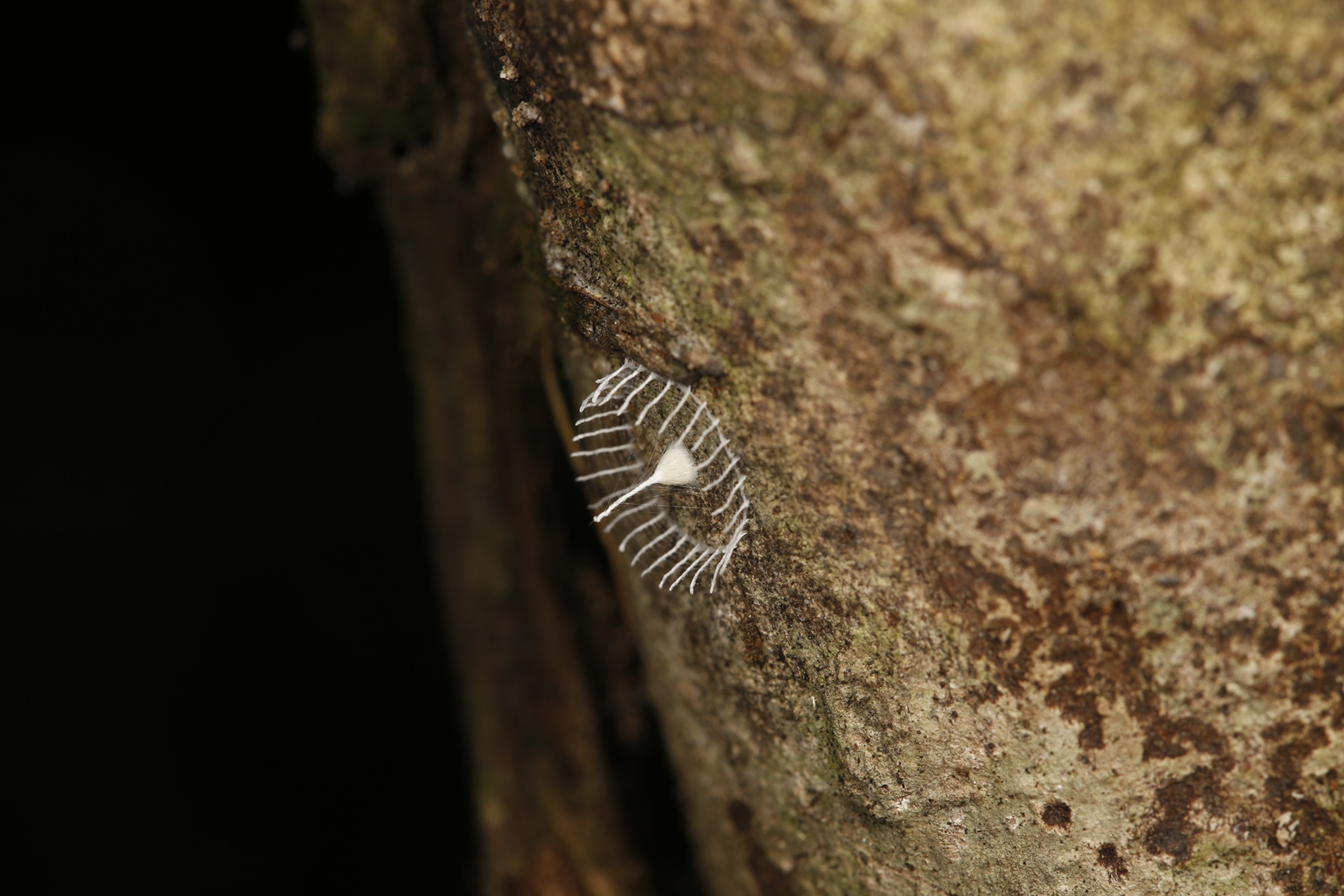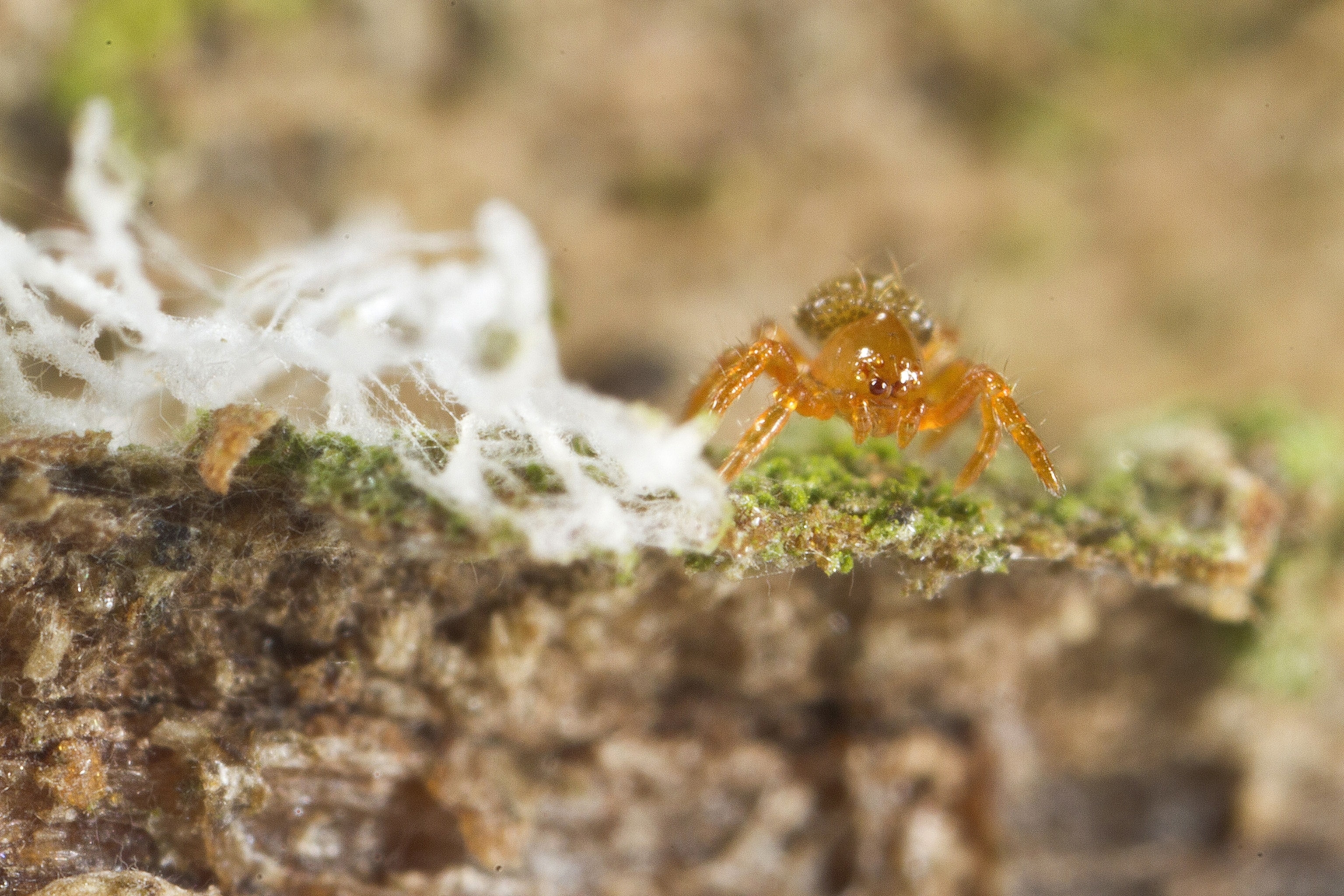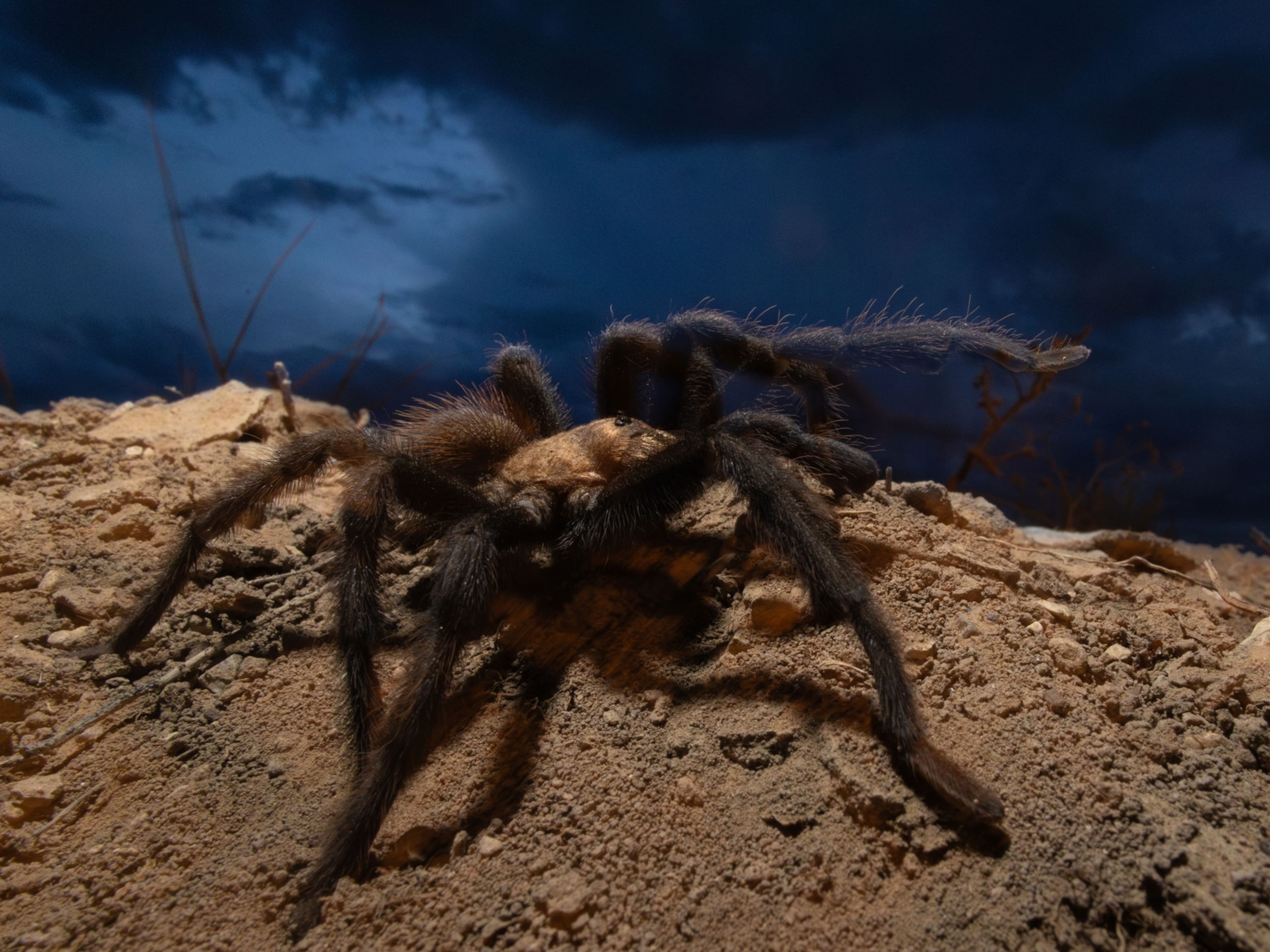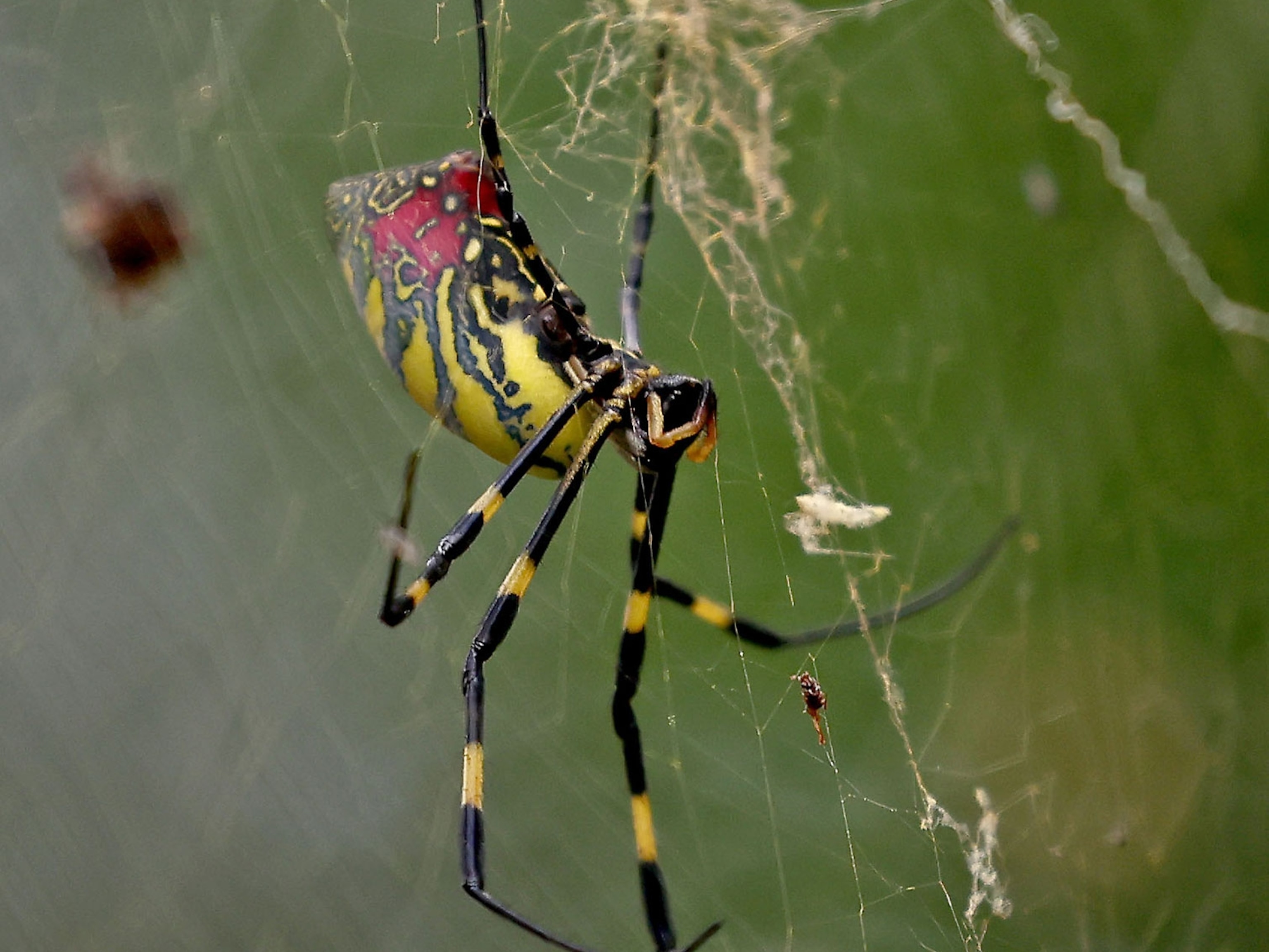
Mystery Picket Fence in Amazon Explained
Nicknamed "Silkhenge," this curious, minuscule structure stumped scientists for months—and then they watched the spiderlings emerge.
The animal that built the strange picket fence structure has been found.
Six months ago, visitors to the Peruvian Amazon discovered a mysterious picket fence structure nicknamed Silkhenge. Despite watching the structure for several days, naturalists at the Tambopata Research Center couldn’t figure out what type of animal (or fungus) was building it.
When scientist Troy Alexander first announced his find, all he had to show for his discovery was a series of intriguing photographs. He had no idea what Amazonian critter could have created the circular hideaway with a spoke-like outer wall.
After consulting with several entomologists, Alexander hypothesized that it was likely built by a type of cribellate spider, which are known for building elaborate structures.
When we first posted news of the picket fence, readers flooded the blog with suggestions for what had built it and what scientists should name the potential new species. While many of you agreed with Alexander’s hypothesis that the fence was built by a spider, others of you weren’t so sure, guessing that a fungus or caterpillar may have built it.
Forest Architects
In December, Tambopata scientist Phil Torres, who helped first discover the spider, along with University of Florida entomologists Lary Reeves and Geena Hill and photographer Jeff Cremer, returned to the small island where they had first found the small picket fences built on the sides of trees and tarps. For a week, they staked out the area, taking careful notes and watching the miniature structures very closely.

Along a 650-foot (200-meter) stretch of trail, the scientists identified 45 different picket fences. Their week of eagle-eyed watching paid off when they discovered spiderlings hatching from three of these fences. (See National Geographic’s spider videos.)
Although they still haven’t identified what species the spiderlings belong to—or whether previous scientists might have already discovered it—they say the structure is intriguing for several reasons.
For one, it is not common for spiders to lay eggs and abandon them, they typically place silken egg sacs in their own web to protect. More oddly, it appears that there was only a single egg per structure. This, as far as we can tell, would be the only known occurrence of a spider laying a single egg per egg sac. We saw a few adult spiders around that were prime suspects, but never saw any making it, so the construction and culprit remain a mystery.
Mite Meal
Besides spiders, the area also contained large numbers of mites that were leading suspects as the fence-builders until the entomologists found the spiderlings. (Also see “Photos: World’s Biggest, Strongest Spider Webs Found.”)
The researchers have hypothesized that the picket fence either serves to protect the egg in the center from other predatory insects or it contains a chemical attractant to lure mites, ants, and other insects to the newly hatched spiders to give them an easy first meal.
Plenty of work still has to be done, but the builders of Silkhenge have at long last been found.





